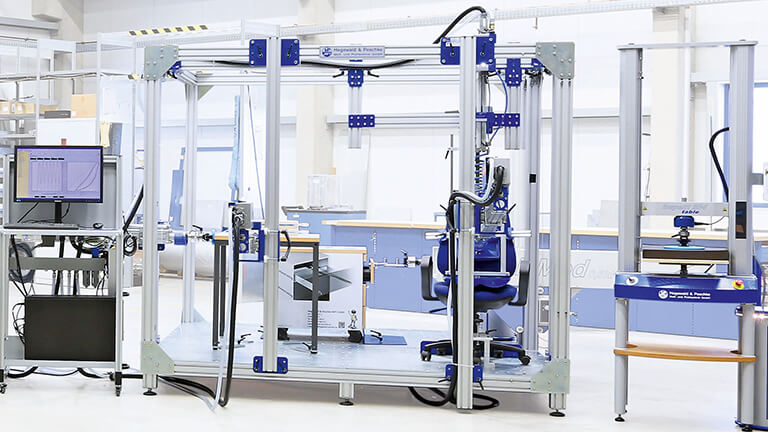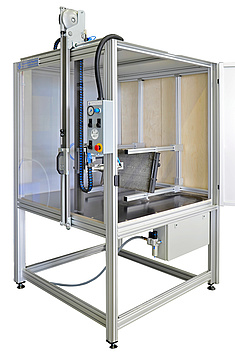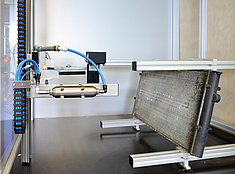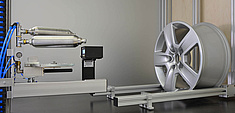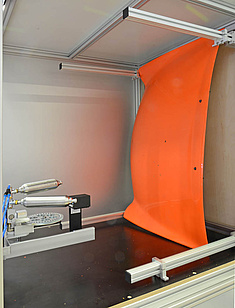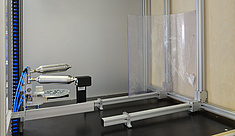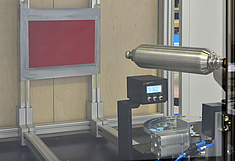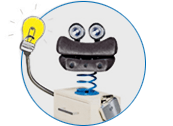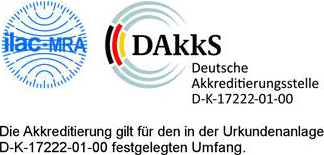Stone impact tester
Test stand for stone impact tests
Application of the multi impact tester:
- Determination of the impact behaviour of e.g. single or multi-layer coatings and paints or plastic composites
- Testing of components for their resistance to stone impact
- Possible test objects and materials: All objects that are at risk of stone impact, e.g:
- Vehicle parts such as radiators, bonnets, wheel rims, windscreens
- Objects on traffic routes, such as signage
- Splinter- and hail-proof textiles, roofing materials or windows, plastics, composite materials
Features of the multi impact tester:
- Test stand tightly encased on all sides - neither bullets nor splinters can escape
- Rear side inside with easily exchangeable plywood panels for energy absorption of misses
- Shooting device can be conveniently positioned freely from the outside
- Pneumatic clamping to secure the firing device in a defined position
- Test piece inclination can be freely adjusted by one or two axes at an angle to the firing device
- Test piece positions can be read off reproducibly from scales
- Compressed air reservoir - high constancy of test conditions over all shots of the test series
- Monitoring of the doors by pneumatic limit switches (firing device cannot be triggered when the door is open)
Operating principle of the stone impact tester
The balls are placed in a magazine and shot at the specimen (e.g. the inner tubes of radiator systems) using air pressure. A laser pointer is used for aiming. The bullets hit the test specimen at a speed of about 140 km/h. The balls are made of chilled cast iron granules and have a diameter of 4-5 mm (DIN EN ISO 11124-2).
The distance between the magazine and the specimen can be adjusted in the range from 150 to 600 mm as required.
Each test involves 40 stone impacts on the specimen. The testing machine records the shot, speed and position on the target. No additional software is required for this.
With the help of the velocity meter, the pressure setting can be varied to achieve the desired velocity. The test stand thus offers advantages in comparison to conventional grit testers and allows the evaluation of defined impacts beyond the requirements of ASTM D 3170 or DIN EN ISO 20567-1.


